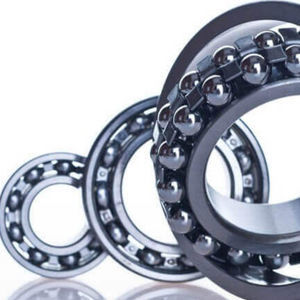
Carbon steel annealing steelcopperbrass

Add to favorites
Compare this product
Characteristics
- Treated material
- steel, brass, carbon steel, copper
- Applications
- for the aerospace industry, automotive, for railway, military, for the nuclear industry, for renewable energy, for aeronautics, for telecommunications, for the construction industry, medical, for the maritime sector, agriculture, chemistry, for the food industry
- Certifications
- OHSAS 18001, ISO 14001, ISO 9001, ISO/TS 16949
- Production method
- small series
Description
Soft annealing is a high temperature heat treatment process performed around A1. As the name suggests the aim of the process is to make a material as soft as possible. After soft annealing the material will have a soft and easy to machine structure.
Benefits
Steels with higher carbon content, and most high-alloy steels, which are allowed to air cool after hot working, such as forging or hot rolling, are usually hard to machine. Soft annealing reduces the hardness and makes the material easier to machine. Soft annealing of low carbon steels < 0,35% C will normally result in a structure too soft and sticky for cutting operations.
The risk of hardening cracks during re-hardening of quenched and tempered steel can be reduced by soft annealing prior to the hardening and tempering process.
Application & materials
Soft annealing can be performed on steel as well as on copper and brass alloys.
Soft annealing is normally performed on steels with a high carbon content and on tool steels to provide a softer and easier to machine structure.
During cold forming of copper and brass components, the material will become harder. The greater the cold forming is, the harder the material will become. The effect of cold forming can be eliminated by soft annealing.
The hardness obtained after soft annealing is dependent on steel type or the type of alloy.
Materials typically soft annealed:
-Steel 170-300 HB
-Copper 40-70 HV
-Brass 50-100 HV
Process details
During soft annealing of a pearlitic steel structure the cementite lamellae will spheroidise creating small round cementite particles in a soft ferritic matrix.
Catalogs
No catalogs are available for this product.
See all of Bodycote‘s catalogsRelated Searches
- Anodic oxidation
- Aluminum anodic oxidation
- Small series anodic oxidation
- Large series anodic oxidation
- ISO 9001 anodic oxidation
- Medium series anodizing
- Automotive anodic oxidation
- Hardening
- Medical anodizing
- Metal hardening
- Automotive hardening
- ISO 9001 hardening
- ISO 14001 anodizing
- Large series hardening
- Medium series hardening
- ISO 14001 hardening
- Small series hardening
- Steel hardening
- Hardening for the energy sector
- Hardening for the aerospace industry
*Prices are pre-tax. They exclude delivery charges and customs duties and do not include additional charges for installation or activation options. Prices are indicative only and may vary by country, with changes to the cost of raw materials and exchange rates.




























